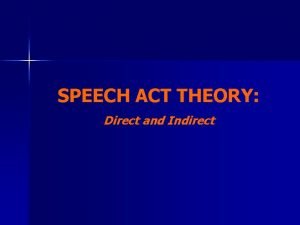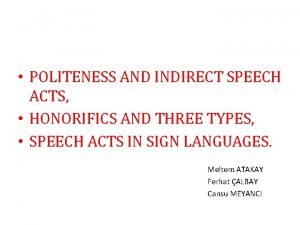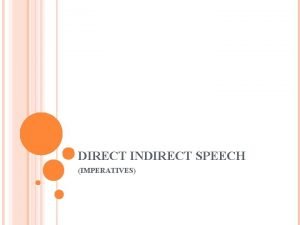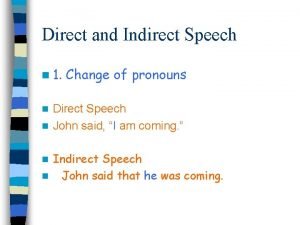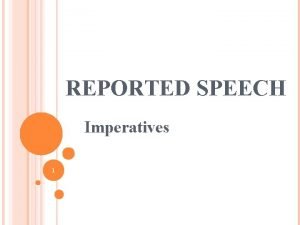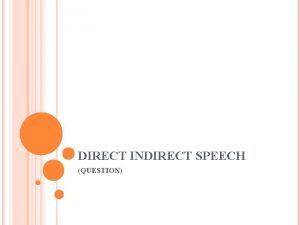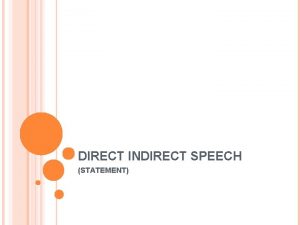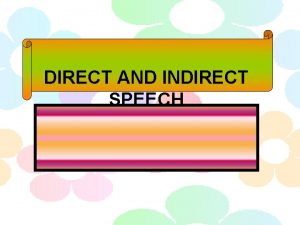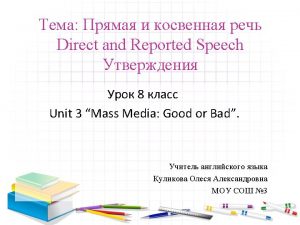SPEECH ACT THEORY Direct and Indirect Sentence Structure








- Slides: 8

SPEECH ACT THEORY: Direct and Indirect

Sentence Structure Sentences can be classified based on the structures into: n Declarative sentence It is a sentence in which the subject precedes the finite. For example: It is cold in here. n Interrogative sentence It is a sentence in which the finite precedes the subject. For example: Can you bring the washings in? What can I do for you? n Imperative sentence It is a sentence beginning with finite. For example: Close the window.

Sentence Function Sentences can be classified based on the functions into: n Statement It is a sentence primarily used to convey information. For example: It is cold in here. n Question It is a sentence primarily used to elicit information. For example: Are you in charge of the garbage? Who is responsible for the garbage? n Command It is a sentence primarily used to tell someone to do something. For example: Close the window.

Direct Speech Act When we speak we do mean exactly the same as the literal meaning of what we say, we make a direct speech act. Utterance You closed the window. Did you close the window? Close the window. Structure Function Declarative Statement Interrogative Question Imperative Command

Indirect Speech Act When we intend something which is quite different from the literal meaning of what we say, we make an indirect speech act. For example: Imagine a friend comes to visit, and you are busy finishing writing an assignment. You might say ‘There’s a beer in the fridge’. As you said this, you are most likely making than just a statement. You may also be offering him something to drink, as well as suggesting he helps himself to it. When someone says ‘Can you pass the salt? ’. Here he is not asking about your ability to pass the salt – the literal meaning of the sentence – but requesting you to pass the salt.

Direct and Indirect Speech Acts Utterance Speech Act Direct or Indirect The garbage isn’t out yet Request Indirect Could you take out the garbage? Request Indirect Would you mind taking out the garbage? Request Indirect Are you in charge of the garbage? Request Indirect Please take out the garbage Request Direct I request you to take out the garbage Request Direct

Performative Verb One way in which a particular speech act might be identified is through the use of a performative verb: that is, a verb which ‘names’ the speech act or illocutionary force of an utterance. For example: Utterance I warn you of the dog I promise not to be late I bet you five dollars our team will win today I request you to take out the garbage Performative Verb Speech Act warning promise promising betting requesting

Explicit and Implicit Performative Speech acts which contain a performative verb are often direct speech acts since they perform their function in a direct and literal manner. Austin makes a distinction between explicit performatives and implicit performatives. An explicit performative is a sentence which contains a verb that names the speech act. For example: I order you to shut up. (= an order) An implicit performative is a sentence which does not contain a performative verb. For example: Shut up. (= an order, a warning, or an advice)

